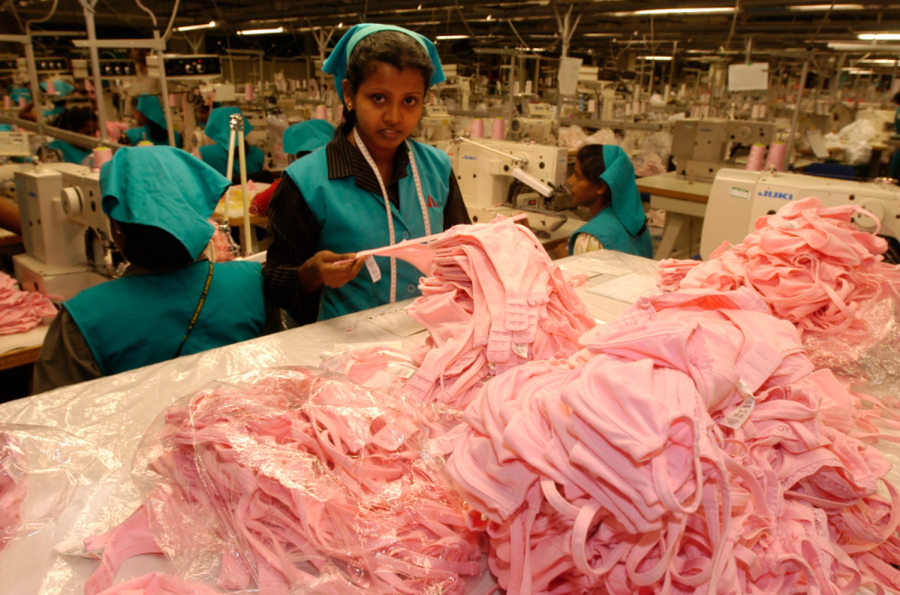The harmful side of convenience
Fast fashion industry takes major toll on environment
Average consumers seek a convenient way to access modern fashion trends. Originating in the 1980s, the fast fashion industry aimed to provide consumers with an affordable solution. Although, with this kind of convenience, there is a horrific byproduct that follows closely behind.
When the fast fashion system started, a quick-response method was used to eliminate the time between design and production. This allowed high, or enhanced, fashion to hit the stores while the trend was active and popular. The quick-response strategy, though convenient to consumers, required a lot of immoral business practices to be successful.
For instance, the garment industry has the highest number of sweatshops globally. As of 2020, there were an estimated 22,000 garment shops in the United States that qualified to be labeled as sweatshops. According to an article published by Cornell, approximately 80% of apparel workers are working in conditions that systematically disregard United States labor standards. These environments, as defined by the US Department of Labor, typically have unfair wages, child labor, unconscionable hours of labor, and poor working conditions.
According to ‘Dangers of Sweatshops’, an article published by the Medium, sweatshops also lack safety equipment for the workers, creating dangerous and unhealthful conditions. Typically, sweatshops lack proper electrical wiring, fire extinguishers, emergency exits, and space between stations to perform work safely.
The United Nations Conference on Trade and Development (UNCTAD) deems the fashion industry as one of the highest contributors to earth’s pollution, second to the oil industry. An article published by Africa Renewal, states that this industry also produces 10% of global carbon emissions, and 20% of waste water pollution. If this trend continues, by the year 2030, gas emissions from the fashion industry are expected to rise by 50%. The rapid increase in gas emissions leads to a direct increase in the “greenhouse effect”.
Though the greenhouse effect is essential to all life on earth, human contribution to the effect is trapping and reducing heat loss to space. This causes a rise in earth’s surface temperature, ultimately resulting in a drastic change in climate. The fast fashion industry alone is a great contributor to the greenhouse effect, but consumer consumption plays a great role in this as well.
From a consumer lens, the convenience of inexpensive and accessible fashion is difficult to pass up. The easily disposable garments allow individuals to wear the clothing when it is trending and to dispose of it when it is not. This repeated cycle causes an average American to produce around 82 pounds of textile waste each year. Textile waste, being mostly nonbiodegradable, takes up approximately 5% of all landfill space.
Additionally, a study conducted by the Boston Consulting Group (BCG) stated that there is a wide diversity of cluster-based consumer mindsets. Although a common theme was difficult to pinpoint, most consumers usually would benefit from what fast fashion provides. For example, a large majority of people in China believe it is important to be an inspiration to others. And in Russia, individuality is more commonly valued.
Fast fashion is beneficial to both of these consumer attitudes. Being an inspiration to an audience of any kind pushes individuals to maintain a trendy image. Constantly keeping up with trends allows people to broaden their audience. With how fast-moving fashion trends are, buying from fast fashion brands makes it easier for influencers to keep up with what is popular in the moment.
When it comes to self expression, fast fashion can also be a great convenience. In the path of self-discovery, people often change their appearance and style to see if it suits them well. These individuals may find that something they wore and loved just a week prior is an opposite style from that they like the present moment. This sequence seems to only be affordable when clothes are initially purchased at a cheaper price. Therefore, fast fashion finds itself convenient here as well.
There are plenty of alternatives that have similar benefits to fast fashion, but with far less consequences. Thrifting, for instance, rose in popularity in recent years. Resorting to alternatives like such reduces pollution, and it puts an end to immoral business strategies practiced by the fast fashion industry.



